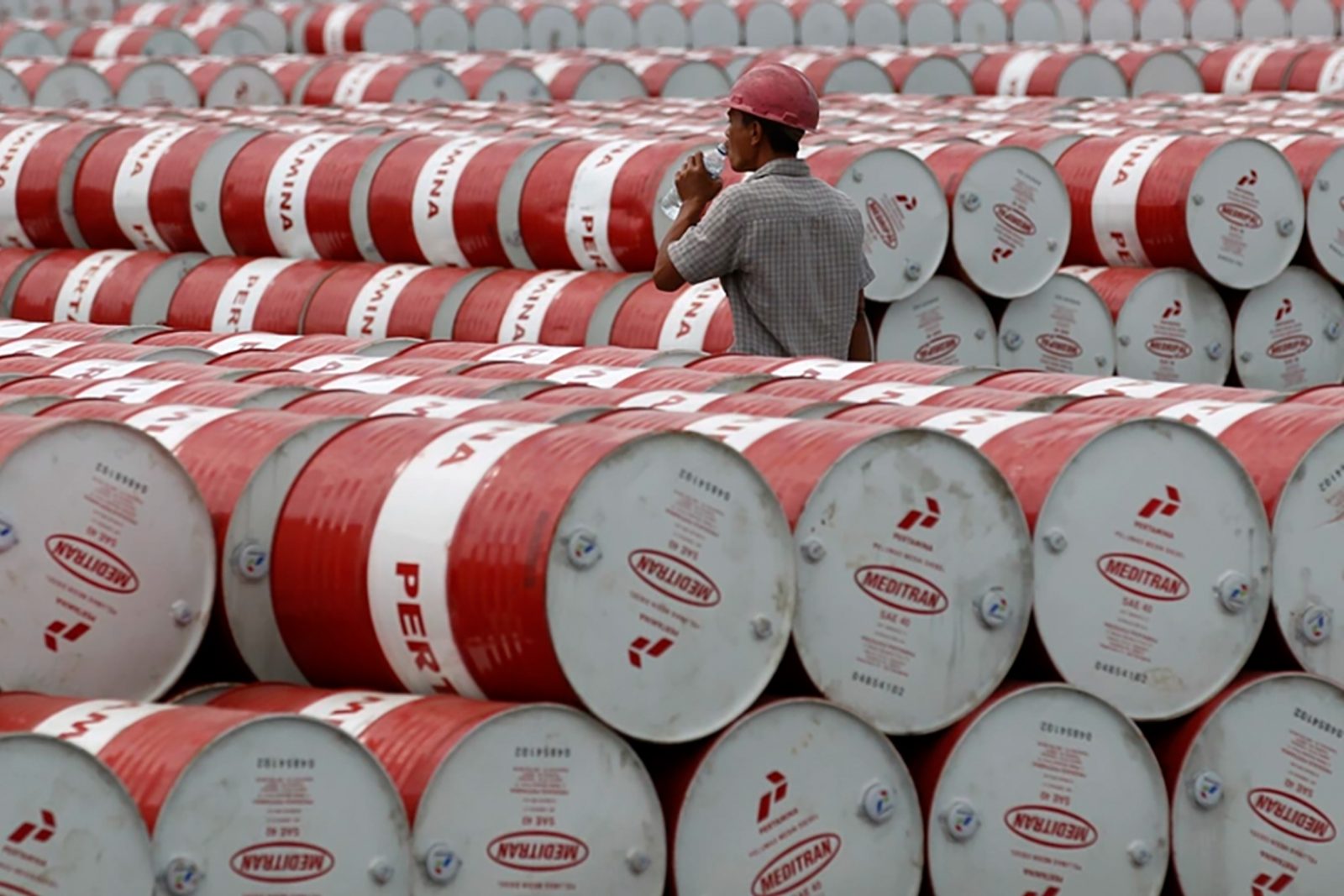Worldwide crude oil Inventory declines could pave the way for more volatile and expensive goods


Crude oil futures surged on Tuesday, reaching their highest point in eight months, buoyed by an overall positive sentiment in the markets. Simultaneously, Saudi Arabia and Russia announced their commitment to extending voluntary cuts in oil production through the year’s end.
Intermonth spreads saw an increase compared to the previous week, with the JPX Dubai prompt month and third month spread recently trading at approximately $2.5 per barrel.
This development aligns with a significant decrease in crude oil reserves over the past couple of months. OPEC’s reduction efforts, coupled with demand resilience beyond expectations, have led to a substantial decline in onshore and offshore crude oil stocks, as reported by tracking data from Vortexa and Refinitive.
As of August, the implied shortage of crude oil has accelerated, with the latest 4-week average indicating draws of nearly 5 million barrels per day. Approximately 2 million barrels per day are attributed to onshore tanks, with an even more substantial figure related to crude oil at sea. Low oil inventories typically result in higher prices and increased market volatility.
The table below illustrates OPEC’s crude output in August and July, as per a recent Reuters survey.
The ten OPEC members adhering to the agreement have displayed strong compliance with agreed-upon production cuts, including additional voluntary reductions. OPEC’s production remains below the targeted amount by nearly 800,000 barrels per day, primarily due to limitations in Nigeria and Angola’s production capacity. Leading exporter Saudi Arabia continued its voluntary 1 million barrels per day output reduction in August, providing additional support to the market. Despite these ongoing cuts, OPEC’s oil production rose in August, driven by increased production in Nigeria and Iran, which largely offset Saudi Arabia’s reductions. It is likely that OPEC’s oil production will remain relatively stable for the remainder of the year.
On the demand side, sentiment has been bolstered by the US jobs report and the introduction of new stimulus measures in China.
The US jobs report released last Friday indicated a slight uptick in the unemployment rate for August, while a healthy 187,000 jobs were added. This serves as the latest evidence that the economy, while still resilient, is beginning to moderate, raising expectations that the Federal Reserve may pause its rate hikes in its upcoming meeting later this month.
In China, in addition to recent economic stimulus measures, attention is also focused on the issuance of the third batch of refined oil product quotas. As we transition into autumn and winter, seasonal trends suggest weakening demand for gasoline and increased purchasing of diesel. China’s continued strength in crude oil purchases will depend largely on whether its refineries maintain significant diesel exports.
The unexpectedly large third batch of export quotas for refined oil products, totaling 12 million metric tons, should help counteract increased maintenance periods at refineries elsewhere during September and October, which could exert downward pressure on diesel prices. However, accelerated refinery processing may shift the shortage from the fuel market to the crude oil market. As a result, supply and demand for crude oil east of the Suez Canal are expected to remain relatively tight, with Dubai crude oil prices maintaining their strength compared to Brent.
Get back to Seikum News 🤓
Intermonth spreads saw an increase compared to the previous week, with the JPX Dubai prompt month and third month spread recently trading at approximately $2.5 per barrel.
This development aligns with a significant decrease in crude oil reserves over the past couple of months. OPEC’s reduction efforts, coupled with demand resilience beyond expectations, have led to a substantial decline in onshore and offshore crude oil stocks, as reported by tracking data from Vortexa and Refinitive.
As of August, the implied shortage of crude oil has accelerated, with the latest 4-week average indicating draws of nearly 5 million barrels per day. Approximately 2 million barrels per day are attributed to onshore tanks, with an even more substantial figure related to crude oil at sea. Low oil inventories typically result in higher prices and increased market volatility.
The table below illustrates OPEC’s crude output in August and July, as per a recent Reuters survey.
The ten OPEC members adhering to the agreement have displayed strong compliance with agreed-upon production cuts, including additional voluntary reductions. OPEC’s production remains below the targeted amount by nearly 800,000 barrels per day, primarily due to limitations in Nigeria and Angola’s production capacity. Leading exporter Saudi Arabia continued its voluntary 1 million barrels per day output reduction in August, providing additional support to the market. Despite these ongoing cuts, OPEC’s oil production rose in August, driven by increased production in Nigeria and Iran, which largely offset Saudi Arabia’s reductions. It is likely that OPEC’s oil production will remain relatively stable for the remainder of the year.
On the demand side, sentiment has been bolstered by the US jobs report and the introduction of new stimulus measures in China.
The US jobs report released last Friday indicated a slight uptick in the unemployment rate for August, while a healthy 187,000 jobs were added. This serves as the latest evidence that the economy, while still resilient, is beginning to moderate, raising expectations that the Federal Reserve may pause its rate hikes in its upcoming meeting later this month.
In China, in addition to recent economic stimulus measures, attention is also focused on the issuance of the third batch of refined oil product quotas. As we transition into autumn and winter, seasonal trends suggest weakening demand for gasoline and increased purchasing of diesel. China’s continued strength in crude oil purchases will depend largely on whether its refineries maintain significant diesel exports.
The unexpectedly large third batch of export quotas for refined oil products, totaling 12 million metric tons, should help counteract increased maintenance periods at refineries elsewhere during September and October, which could exert downward pressure on diesel prices. However, accelerated refinery processing may shift the shortage from the fuel market to the crude oil market. As a result, supply and demand for crude oil east of the Suez Canal are expected to remain relatively tight, with Dubai crude oil prices maintaining their strength compared to Brent.
Get back to Seikum News 🤓



